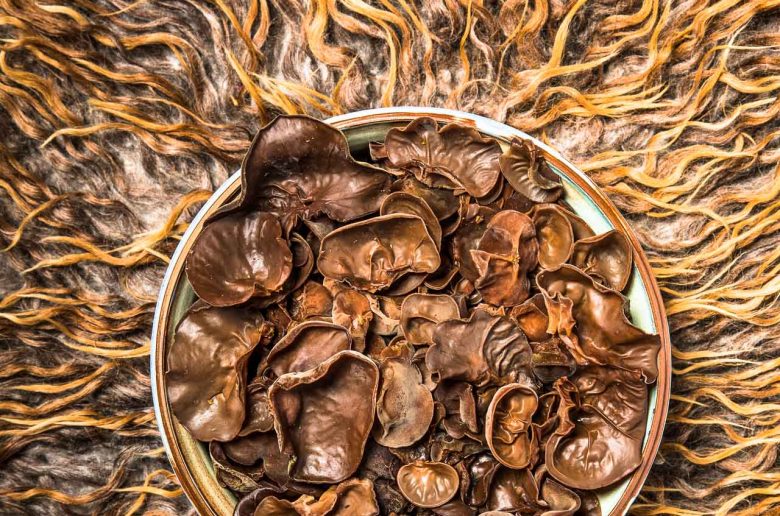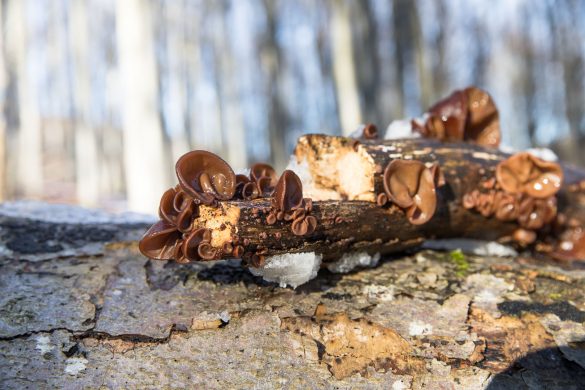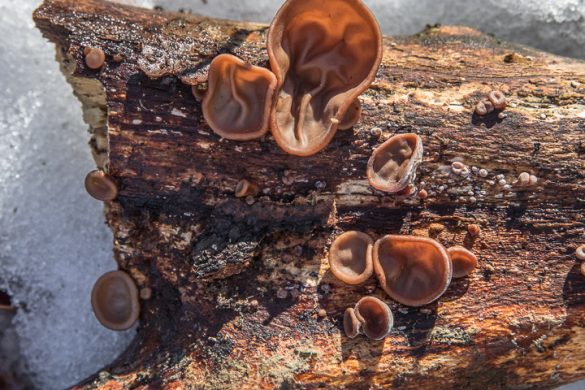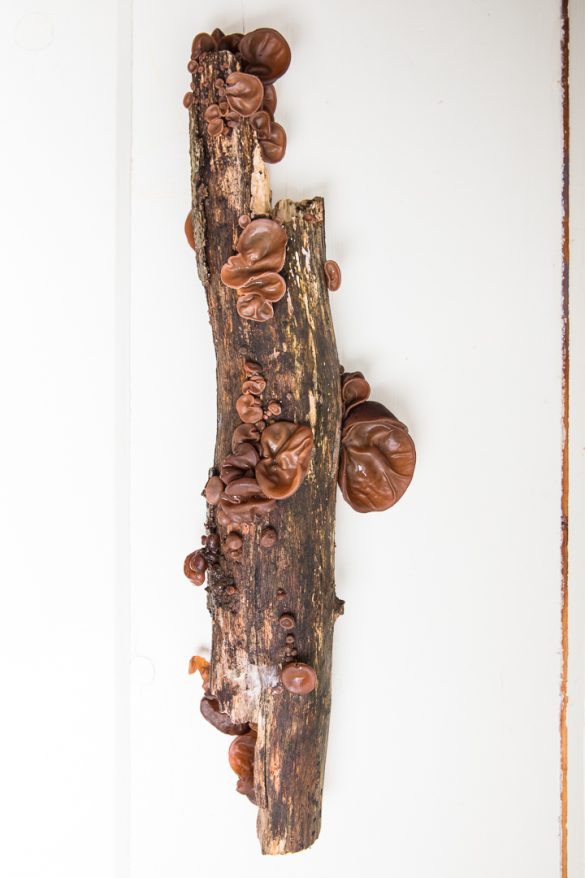Finnish: Juudaksenkorva
Swedish: Judasöra
Norwegian: Judasøre
German: Judasohr, Holunderschwamm, Holunderpilz, Mu Err, Wolkenohrpilz
Other Scientific Names: AURICULARIA AURICULA, AURICULARIA SAMBUCINA ODER HIRNEOLA AURICULA-JUDAE, AURICULARIA POLYTRICHA

Description
Wood ears or jew’s ears are another classic that goes under the radar of most people even though many will have unconsciously tasted it. It is particularly popular in Asian cuisine and usually served as Mu-Err in Asian restaurants. This mushroom can be found all year round and is one of the few mushrooms that can be found in winter. Its primary habitat are the branches and trunks of the widespread European black elder (Sambucus nigra) tree, hence its nickname elder mushroom. As a decomposer, it feeds on weakened or dead wood and can also be found on hard wood trees as beech. The red-brown to pale grey fruiting bodies are between 3 and 12 centimetres in diameter.
This inconspicuous mushroom got its name from Judas Iscariot, the disciple who betrayed Jesus, as well as its distinctive ear shape. According to legend, Judas hanged himself from an elder tree out of guilt.


Lookalikes
In principle there are no poisonous doppelgangers in Central and Northern Europe. Judas ear’s can, however, be confused with various members of the family of Tremella and Exidia, e.g. Witches’ butter (Exidia nigricans).

Notes
The close relative and equal in use, taste and appearance “Mu-Ehr” (A. polytricha) is a regular in East Asian kitchens. Its name is also used as a synonym for our native Jew’s ear. Its cartilage-like texture makes it a classic for soups and sauces. In terms of taste, this mushroom is almost neutral, but has the property that it can absorb other aromas well. Jew’s ears can also be dried perfectly. So if you cannot fall back on fresh specimens, you also have the option of buying these, or at least their close relatives, dried in most Asian supermarkets.
Their high protein and mineral content makes them a healthy addition to the kitchen. They are particularly rich in calcium, potassium and magnesium. In Chinese medicine, these mushrooms are used as remedies against, amongst other things, circulatory disorders, inflammation or to thin the blood. It’s anti inflammatory effect has been known in European folk medicine for centuries and was used, for example for eye infections.
We have compiled this overview with the best of knowledge and belief, but do not claim to be complete and reserve the right to make errors.
Learn more about poisonous mushrooms and mushroom poisons here
↓↓↓

